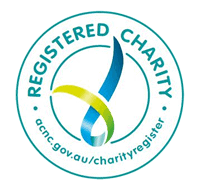“Stings that make you feel like you’re on fire.”
For red fire ants, it’s not one bite, but hundreds in a swarm, all at the same time.
They are on the march toward Toowoomba and are moving into the Murray Darling Basin and if we don’t act quickly, they will spread into NSW and Victoria. These relentless killers even create a flotilla style raft to survive floods and their queens can fly many kilometres to form new nests.
They affect the environment, human health, food systems and our lifestyle. If we do not stop them, in this area alone it is predicted 45% of birds will decline, as well as 38% of mammals, 69% of reptiles and 95% of frogs. In America, they have already killed at least 85 people and have stopped children playing in their backyards.
It’s not just red fire ants either.
Yellow crazy ants are also wreaking havoc across northern Queensland.
They too are tiny but swarm in great numbers, killing much larger animals like lizards, frogs, small mammals, turtle hatchlings and bird chicks. They can re-shape entire ecosystems by removing these creatures that are vital for pollination and regulating bushland.
Politicians know that Australians care about eradicating killer ants before they cause permanent damage to our environment and economies.
The newly elected federal government has committed $24.8 million to eradicate yellow crazy ants, who like red fire ants, are on the list as one of the top 100 worst invasive species in the world.
The red fire ant eradication program is still at risk of failing due to red tape and a shortfall in funding.
The yellow crazy ant eradication program needs to go from an election promise into concrete action.
We must ensure that funding for yellow crazy ant eradication is delivered effectively across northern Queensland.
We must ensure that the red fire ant eradication doesn’t get deprioritised and ensure permanent damage isn’t done to our environments and economy.
Please make a tax deductible donation now and help ensure the Australian government prioritises our most damaging invasive pests and funds eradicating red fire ants and yellow crazy ants.







